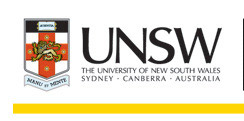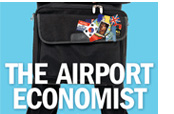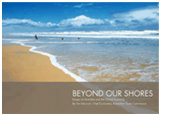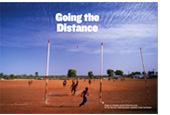The Dollar dazzles but Aussie battlers still build new export markets
By Tim Harcourt*
Tully, in North Queensland, is a great place for a holiday, especially if you like it wet. But it seems that if the price is right, and they can afford it, don’t most Australians prefer to holiday in Thailand or even Tuscany, rather than Tully?
The fact that once exclusive European holidays are now within the reach of more Australians is one of the many upsides of our strong dollar. With the dollar at or over parity for most of the past year, everything from overseas holidays to imported cars and appliances are cheaper.
This is not going un-noticed by the average Australian. A record number of Australians are holidaying overseas and the planes on the routes to Los Angeles are packed to the gunwales. If Qantas still had the monopoly there their international division wouldn’t be having such problems.
The same thing is happening in the retail sector as Australians are going on line in record numbers to shop (for imports) in the US from their (imported) i-pads. This is a natural reaction to a once in a generation change in relative prices. And surely anyone who complains about the democratisation of access to imported products is being positively un-Australian, surely?
There is, of course, a noisy anti high dollar lobby out there. Manufacturers, tourism operators and the retail sector keep telling us that every cent the Aussie moves upwards is another nail in their coffin. They paint a picture of an Australia denuded of all industry but for mining, and invoke an apocalyptic scenario of what will happen when we are all mined out. And even miners are now complaining of Australia being a ‘high cost’ market. Even market economists have chimed in rebasing their interest rate forecasts because of the (alleged) massive destruction the Godzilla dollar is doing to the Australian economy.
The vision is a bleak one but it is also misleading. We can feel their pain, but the reality is that the majority of our exporters don’t let fluctuations in the exchanges rates ruin their business plans. In fact a new DHL survey shows that only 20 per cent believe the exchange rate is a factor in their decision to invest in or expand their overseas operations. And around a quarter of large enterprises and SME’s have some form of currency hedging in place. Exporting is a tough business but the winners are the ones who play the long game, and hang in there in markets where they ultimately gain respect and build relationships.
The other thing about exporters is that two-thirds of them have now become importers. Often they are importing capital goods which they are using to develop and build their capacity and their business. We are talking trucks, aeroplanes, manufacturing equipment, and power generation turbines.
As a young economy still in the process of capital formation this importing of capital is necessary and positive, and indicative of a strong economy. It is in the interests of the long term strength of our economy, and it is being helped along by the strong dollar.
All this is part of living in the global economy with a floating exchange rate with an economy going through – largely positive – structural re-adjustment.
A look across the southern hemisphere to the example of Argentina is a cautionary tale on what can happen if we get so hung up on the exchange rate that we seek to take it out of the control of market forces.
Tying the value of the Argentinean peso to the US dollar saw the two currencies become interchangeable, with ATM’s dispensing either currency. But when the local economy went sour and everyone wanted to change their pesos for dollars, the financial system had a seizure. Meanwhile, the success of neighbouring Brazil – with its floating currency – has been well documented.
Some of us might not love our high dollar, but we must learn to live with it and recognize the way it is reflecting a change in our economy. As Reserve Bank deputy governor Philip Lowe pointed out earlier this year, Australia’s exports of “traditional” manufactured items such as cars and building goods has been in decline in recent years, while sales of professional services, scientific and specialised machinery sales have been rising. The Asian Century white paper illustrated this point showing the employment growth in areas like health care and social assistance, professional, scientific and technical education as well as construction and mining.
And as Australia has undergone structural reform nearly three decades after the float of the dollar, our labour market remains the envy of the OECD. High dollar, open economy but low unemployment. It’s a pretty powerful combination even if Australians are exporting to Asia, buying imports online from America and taking their holidays in Tuscany and Thailand rather than Tully.
*Tim Harcourt is the JW Nevile Fellow in Economics at the Australian School of Business, UNSW and author of The Airport Economist: www.theairporteconomist.com
Tim Harcourt is a professional economist specialising in international trade and labour economic issues in the Asia Pacific region and in the emerging economies. Tim's passion is Australia's engagement with the global economy and the challenges and opportunities it offers business and the Australian community as a whole.
Tim has broad experience in public policy and in communicating international economic issues widely in the community. He has held senior roles in both the public sector and private sector in Australia and internationally and in the community and education sectors. In Australia he has worked for the Reserve Bank of Australia, Fair Work Australia, the Australian Council of Trade Unions (ACTU and the Australian Trade Commission (Austrade).













No Comments so far ↓
Comments are closed.